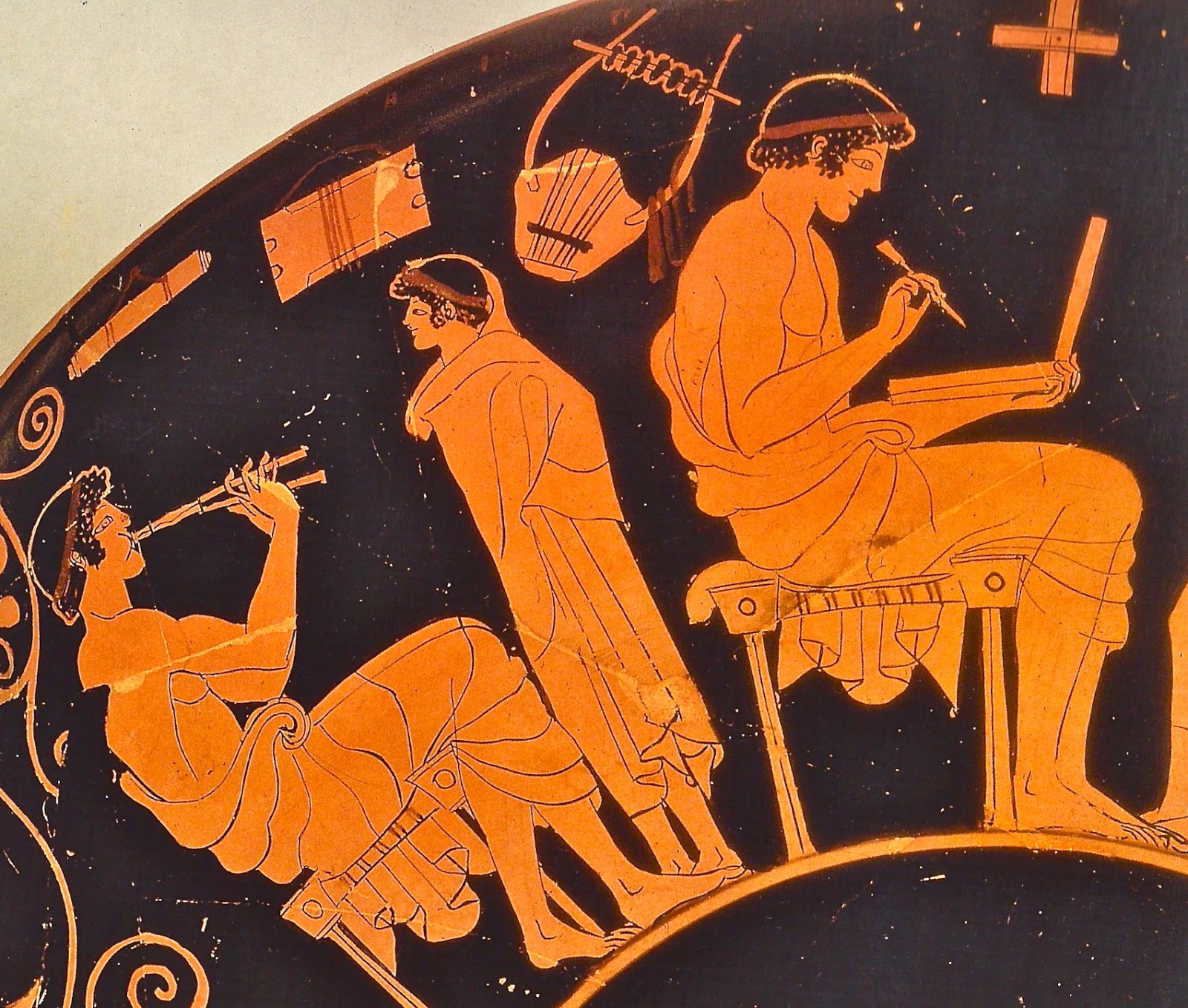Classics Papers—Citations
 This page outlines how to do in-line citations rather than footnotes. If you are working
on a paper for a 300-level course, your instructor might require footnotes; consult
with your instructor.
This page outlines how to do in-line citations rather than footnotes. If you are working
on a paper for a 300-level course, your instructor might require footnotes; consult
with your instructor.
You should cite your sources:
- when you quote directly from a source.
- when you summarize or paraphrase someone else's ideas. Even though you put those ideas in your own words, when you incorporate someone's analysis or interpretation in your essay, you need to cite the source.
- when you refer to factual information that is not likely to be found in other sources.
You need not cite sources:
- when you are referring to information that is "common knowledge" in your field. Dates, definitions, and theories, for example, might fall under the category of common knowledge.
- when the source is evident from your own essay. For example, if you are writing about a particular poem by Homer, you will need to list the work in the first citation, but henceforth you need only provide in the citation the book and line numbers of the quoted passages as you analyze the poem.
- when you are making your own assertions.
A Note on Punctuation
Place the citations within parentheses, with a space before the parenthesis and commas or periods only after the second parenthesis. If you use a quotation, the end quotation mark goes before the citation.
- This is a correct citation (Arnush 2013, 99).
- "This is a correct citation" (Arnush 2013, 99).
- This is an incorrect citation. (Arnush 2013, 99)
- "This is an incorrect citation." (Arnush 2013, 99)
- This is also incorrect(Arnush 2013, 99).
- "This is also incorrect." (Arnush 2013,99).
- This is also incorrect. (Arnush 2013, 99).
- "This is also incorrect." (Arnush 2013, 99).
Primary Sources
Cite the author, work and the standard method of referring to the passage. Cite your sources within parentheses. For appropriate abbreviations, consult the Oxford Classical Dictionary, ed. by S. Hornblower and A. Spawforth, 3rd ed. (Oxford, 1996 repr.), pp.ix-xxii or online at Perseus.
Vergil, Aeneid, book 4, lines 1–10: cite as (Ver. Aen. 4.1–10).
With authors who only have one work (e.g., Herodotus and Thucydides in Greek, Livy in prose), only the name of the author is necessary:
Herodotus, book 6, chapter 35, section 2: cite as (Hdt. 6.35.2).
For artwork, cite the author, year of publication and the figure in the text:
(Hurwit 2004, fig. 53).
If a primary source appears in a sourcebook, both the source and the sourcebook should be cited:
Plutarch, Life of Lykourgos, book 1, section 1 in Dillon and Garland, 2000, section 6, text 1: cite as (Plut. Lyk. 1.1 in Dillon and Garland 2000, 6.1)
Note that sourcebooks typically use a unique numbering system for each ancient text, and so you should cite them by the numbering system rather than the page number(s).
Secondary Sources
For scholarship, provide the author, year of publication and the pages you are citing:
(Last Name Year, Page Number).
(Courtney 1982, 18).
(Favro 1992, 78–79).
(Hurwit 2004, 182).
(Schwab 2005, 169–170).
(Sear 1982, 56).
All secondary sources cited throughout your paper should also be listed in your Works Cited. Note that in line citations differ from bibliographic citations in a Works Cited page.